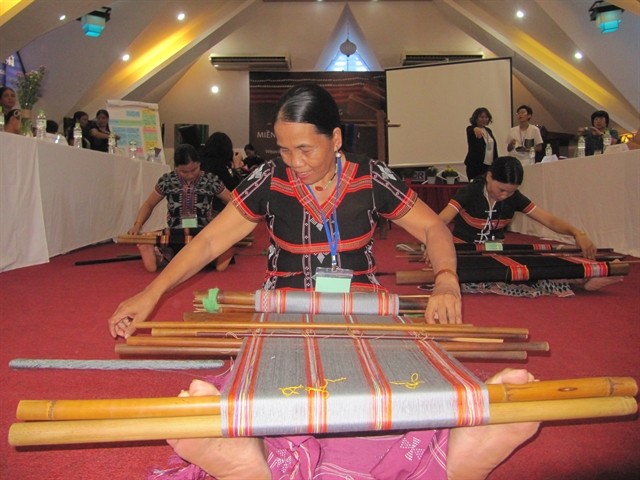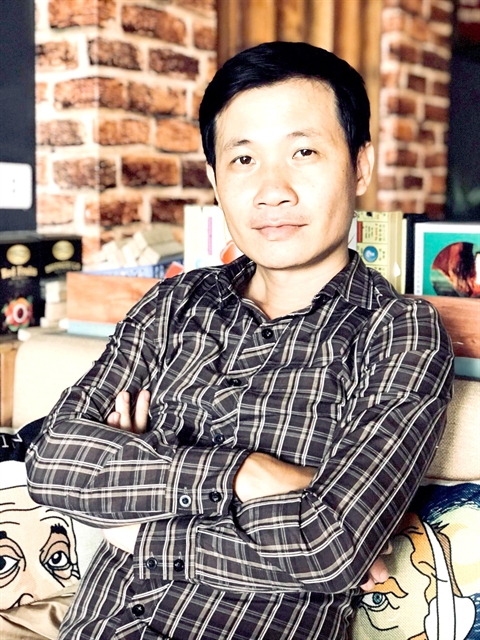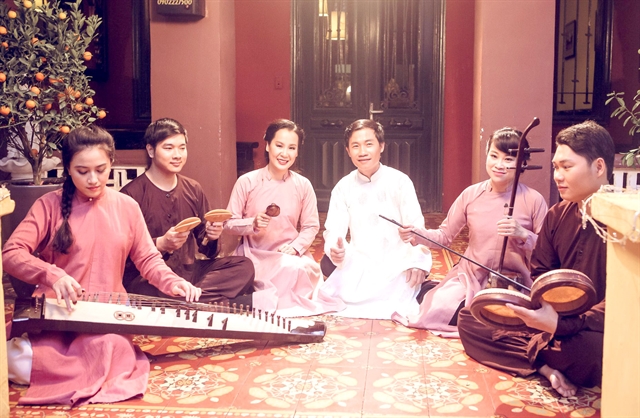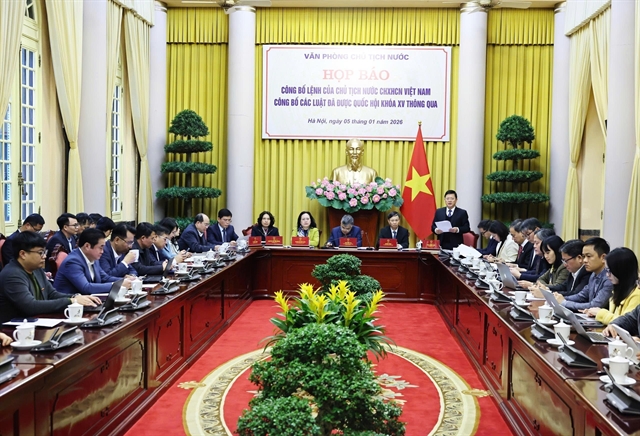 Inner Sanctum
Inner Sanctum

Musician Nguyễn Quang Long is well-known for his devotion in reviving xẩm (blind busker’s singing). Actually, he’s also a researcher of various types of traditional performing arts. He speaks with Minh Thu about the works behind the curtain.
Musician Nguyễn Quang Long is well-known for his devotion in reviving xẩm (blind busker’s singing). Actually, he’s also a researcher of various types of traditional performing arts. He speaks with Minh Thu about the works behind the curtain.

|
| MUSIC IN MIND: Nguyễn Quang Long is determined to devote his life to traditional music. Photos courtesy of the artist |
Inner Sanctum: You really do have a wonderful voice. Why is it that you only perform xẩm and no other types of music?
Not many people know that I studied at the Việt Nam Academy of Music, majoring in singing. I was born into a family with a deep passion for traditional music in the northern province of Bắc Giang. My father, Nguyễn Ngọc Tưởng, was a famous quan họ (love duets) singer. I learned quan họ from Meritorious Artists Khánh Hạ and Thanh Hiếu, two famous artists and teachers of quan họ in Bắc Ninh and Bắc Giang Provinces - the cradle of the artform.
So during my childhood I nurtured a passion and love for traditional music. I dreamed of being a professional singer, but when I entered university in Hà Nội I found that there are many subjects related to music. Gradually I realised that musicology was more suitable for me than singing. I then pursued music research and analysis.
I learned many things in musicology: European classics, Vietnamese revolutionary music, and contemporary music. From early on, traditional music has played a significant role in my life. I decided to focus on this type of music and wanted to devote my whole life to it.
Xẩm is just one of the many traditional music genres I have worked on. But it is very special to me. It’s like predestined love - you can’t do anything but follow the faith. This required me becoming involved as a performer, not just a researcher. I began deeply researching xẩm in 2005 and did what I could to revive it. I teamed up with veteran artists such as Professor Phạm Minh Khang, Thao Giang, People’s Artist Xuân Hoạch, and singers Thanh Ngoan and Mai Tuyết Hoa to perform xẩm on the weekends in Hanoi’s Old Quarter, when it’s vehicle-free.
Inner Sanctum: Xẩm certainly holds a strong position within the music industry and is growing in popularity. What has your involvement with xẩm been over the last 15 years?
Today we can be proud that xẩm holds a similar position as other types of music and is an integral part of any performance of traditional music.
I couldn’t have imagined the current status of xẩm when I started out 15 years ago. In the beginning, I only planned to do two things: make it popular in the media, to raise awareness about it as an artform; and to preserve its heritage: the lyrics, the melodies, and the performers’ intelligence.
When they think of xẩm, people think it is an artform of the poor, of beggars who moan about their lives and sing for money. There’s some truth in this, but we can’t deny the heritage of the songs, the unique rhythm and optimistic lyrics. I have written many articles for local media about the artform. Việt Nam News reporters have also interviewed me and other artists in our team to help foreign readers understand more about xẩm.
In preserving this heritage, I visited folk artisans such as Hà Thị Cầu (1928-2013), who at the time was a living treasure of xẩm songs, and recorded her singing and collected the rhythms and lyrics. Singer Mai Tuyết Hoa also stayed at her home to study with her. But heritage needs to be promoted and come alive in modern times. So I composed new songs based on old melodies, about patriotism, sovereignty, traffic safety, and life’s beauty, such as Bốn Mùa Hoa Hà Nội (Hà Nội’s Four Seasons of Flowers) and Tứ Vị Hà Thành (Four Delicacies of the Capital), to attract young audiences to an old artform. The songs have new vitality and a fresh appeal.
Inner Sanctum: Many young people have an interest in learning traditional music. Do you think they have an easier time of it than you did?
I think so. Today, xoan and quan họ are taught at high school in provinces where the artforms originated from. If somebody is interested in this type of music, they can readily find it online. There is a side effect to all this, however - things that are easily found and are free are not always respected. As traditional music becomes more accessible, students may become lazier and give up more quickly.
Before, it was difficult to find an artisan and learn from them. It was like walking a great distance and developing a thirst. What the artisans gave us can be compared to pure water - more precious than gold. We respected them and followed them.

|
| MAINTAINING TRADITION: Long (third from right) performs with the Xẩm Hà Thành Group, who also play in Hà Nội's Old Quarter on weekends. |
Inner Sanctum: People know you as a xẩm performer and musician. Can you tell us about your research into other types of music?
Xẩm is a special artform that I must perform on stage in order to preserve it. For other types of music, all of my work is done behind the scenes. For example, I researched and worked with artisans to release DVDs and articles on đờn ca tài tử (southern talented music), hát xoan (Phú Thọ spring singing), bài chòi (southern singing and card playing), and Tây Nguyên (central highlands) gong music.
I worked with the People’s Committee of Ninh Bình to organise a xẩm festival and with the Phú Thọ People’s Committee to hold a xoan festival. I also joined a team to compile school textbooks on xẩm and xoan.
Inner Sanctum: What are you doing now and what are your plans for the future?
The Xẩm Hà Thành group and I still perform in the Old Quarter on weekends, and the show has become a speciality of the many cultural activities in the pedestrian zone. We also invite guest artists to perform other types of music, to make the show more appealing.
At the end of this year I will release a book of important writings about traditional music. I will then publish a handbook with detailed explanations of terms used in traditional music. You could call it a dictionary for music researchers, students, and any writers in the field.
I also touch on why quan họ singers can’t marry each other. The history of quan họ is marked by many tragic love stories between male and female singers. They meet at spring festivals, sing together, and fall in love. But they can’t marry. In the book, I talk about kết chạ, a tradition whereby two villages form a sisterhood, and young people from these villages are considered siblings. This is why they can’t love each other. Quan họ singers can love and marry as long as they don’t come from two villages with a traditional bond.
Inner Sanctum: You also joined the Tình Nghệ Sĩ (Artists’ Love) Fund, founded by singer Trọng Tấn, recently?
Yes. I only made a small contribution to the fund together with other artists. I have worked in the field of traditional music for 15 years. Wealth, however, does not come from research. I have earned some money from releasing DVDs, books, and music videos. I am an artist in need myself, but if possible I also want to help others.
Early this month we helped organise a mini concert to raise funds for the Nắng Mới (New Sunlight) band of blind musicians.
And last month we visited singer Hồ Phàm, a favoured student of composer An Thuyên. He had an accident recently, and his wife only just died of cancer. Life is quite difficult for him at the moment. VNS




